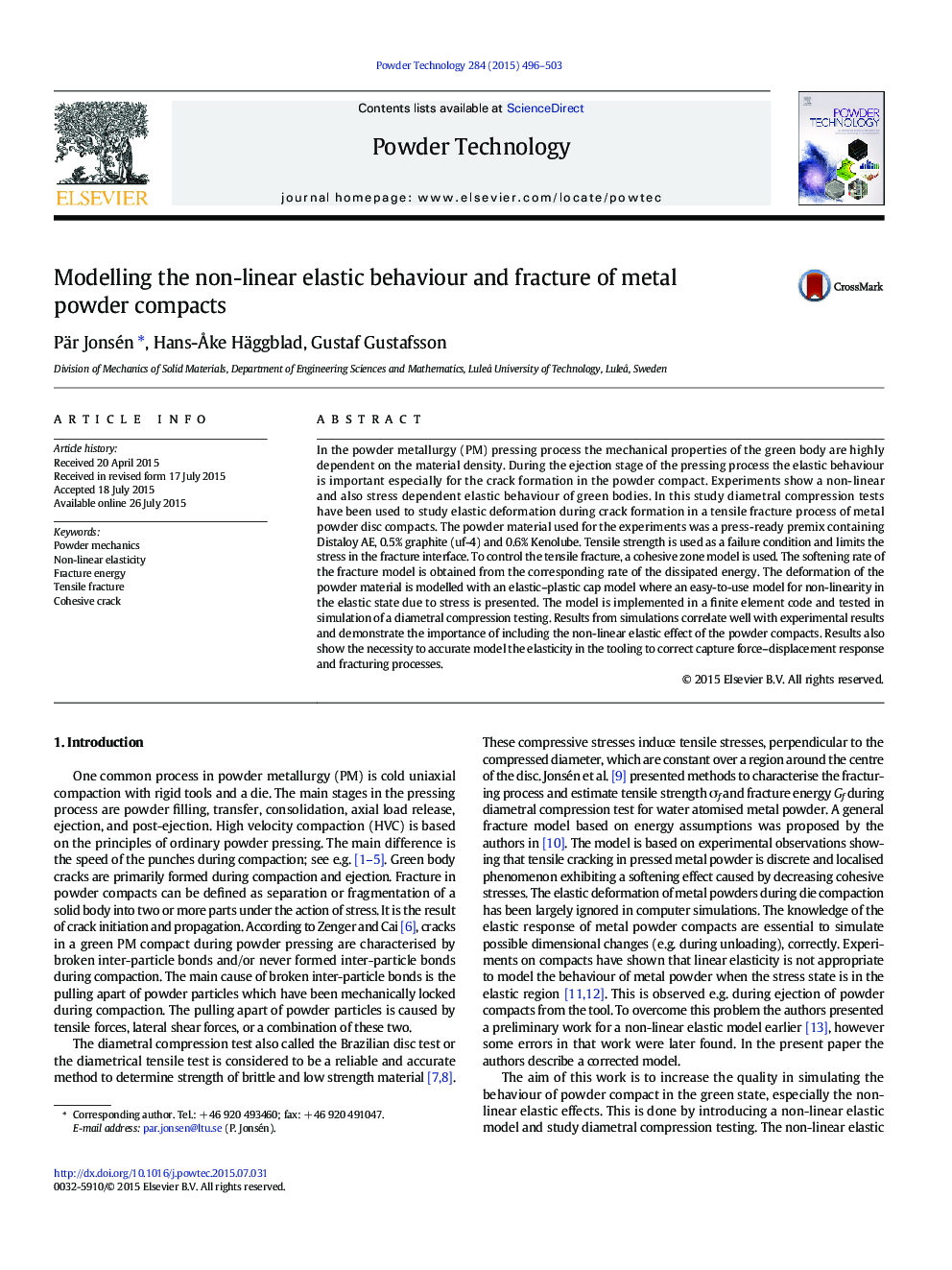| Article ID | Journal | Published Year | Pages | File Type |
|---|---|---|---|---|
| 235376 | Powder Technology | 2015 | 8 Pages |
•Non-linear elastic load dependent model of power compacts was modelled.•Tensile strength and fracture were incorporated in the model.•Improved load–displacement response was obtained.•Numerical results are validated against experimental measurements
In the powder metallurgy (PM) pressing process the mechanical properties of the green body are highly dependent on the material density. During the ejection stage of the pressing process the elastic behaviour is important especially for the crack formation in the powder compact. Experiments show a non-linear and also stress dependent elastic behaviour of green bodies. In this study diametral compression tests have been used to study elastic deformation during crack formation in a tensile fracture process of metal powder disc compacts. The powder material used for the experiments was a press-ready premix containing Distaloy AE, 0.5% graphite (uf-4) and 0.6% Kenolube. Tensile strength is used as a failure condition and limits the stress in the fracture interface. To control the tensile fracture, a cohesive zone model is used. The softening rate of the fracture model is obtained from the corresponding rate of the dissipated energy. The deformation of the powder material is modelled with an elastic–plastic cap model where an easy-to-use model for non-linearity in the elastic state due to stress is presented. The model is implemented in a finite element code and tested in simulation of a diametral compression testing. Results from simulations correlate well with experimental results and demonstrate the importance of including the non-linear elastic effect of the powder compacts. Results also show the necessity to accurate model the elasticity in the tooling to correct capture force–displacement response and fracturing processes.
Graphical abstractFigure optionsDownload full-size imageDownload as PowerPoint slide
